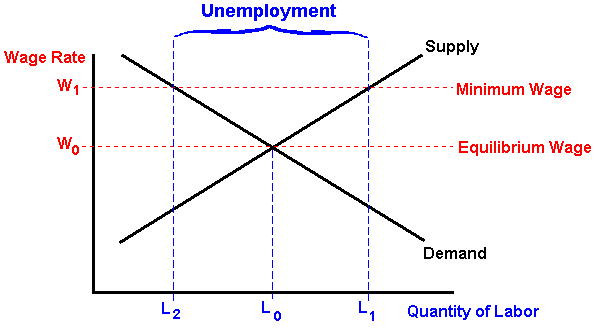Division of Labour: the splitting of a manufacturing process to individual small units so that each worker can be assigned one task.
Advantage to workers:
- Focusing on the same task means that the worker will eventually become an expert. This means they are more employable, will have a higher satisfaction and a higher wage.
Disadvantages to worker:
- The work can become boring leading to job dissatisfaction and lack of motivation.
- Unemployment is highly likely.
Advantages to firms:
- Efficiency is improved through specialization. Fewer mistakes are also made and workers generally work faster and more accurately.
- Greater use of specialist tools, machinery and equipment is possible when workers specialize.
- Because workers do not have to move about, production time is reduced.
- The organisation of production becomes easier. This means less managers have to be hired, decreasing cost.
Disadvantages to firms:
- Lack of motivation for workers results in poor quality of work, poor punctuality and a reduction in productivity.
- Because each section of production is dependent on the other, it can easily be halted if one section goes wrong. It is therefore too interdependent.
- Production can easily be disrupted by an absent worker or specialist.
Wages, like product prices are also determined by demand and supply. If demand for labour rises then wages will rise. If supply of labour rises the prices will fall.
Factors affecting demand for labour:
- Demand for final product- if consumers demand more for the product, then more employment is needed. This is called derived demand.
- Availability of substitutes- if a firm believes machinery is going to be more efficient and cheaper than the demand for labour will fall.
- Productivity of workforce- the more productive the workforce, the greater the demand.
Factors affecting supply of labour:
- Changes in school leaving age and retirement age.
- An increase or decrease in immigration.
- An increasing female participation in the workforce will increase supply of labour.
- The changing age distribution will change the supply of labour.
Interference in the labour market:
Qualification and training: although the price of labour is important, the quality is also important. This is because the workforce becomes more productive. The responsibility for education and training is provided by both the state and firms
Minimum wage legislation:
Reasons:
- To benefit disadvantaged workers such as women, ethnic minorities, the disabled and low income families.
- To reduce poverty by helping to raise the wages of the lowest income workers.
Theoretically, this should cause unemployment, however, in the UK, since 1999 when the minimum wage was introduced, unemployment has actually fallen.
 |
| This shows why a minimum wage might create unemployment. |
A trade union is an organisation which represent the workers and negotiates better wages and working conditions.
A TU uses their collective bargaining power to achieve this. TUs use these powers through bi-lateral negotiations to increase wages more than inflation and for better living conditions.
Employers may ask for a performance related element to increase productivity.
No comments:
Post a Comment